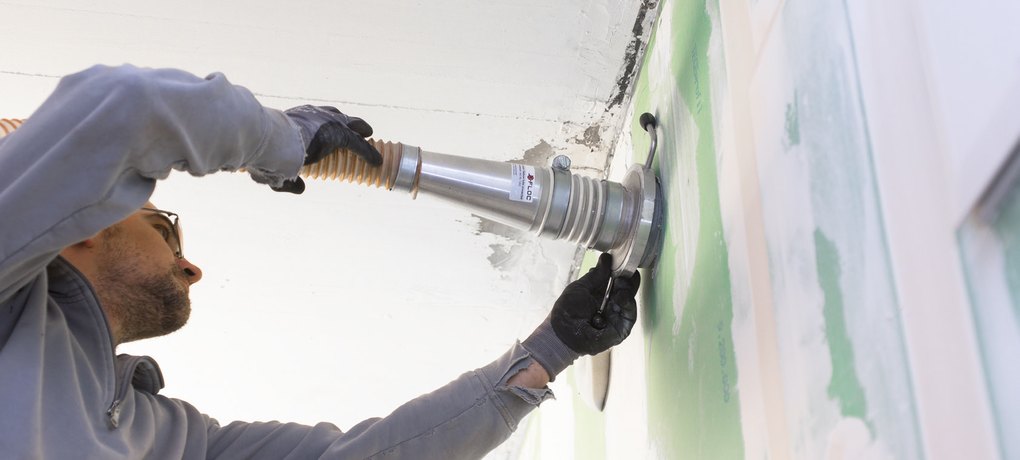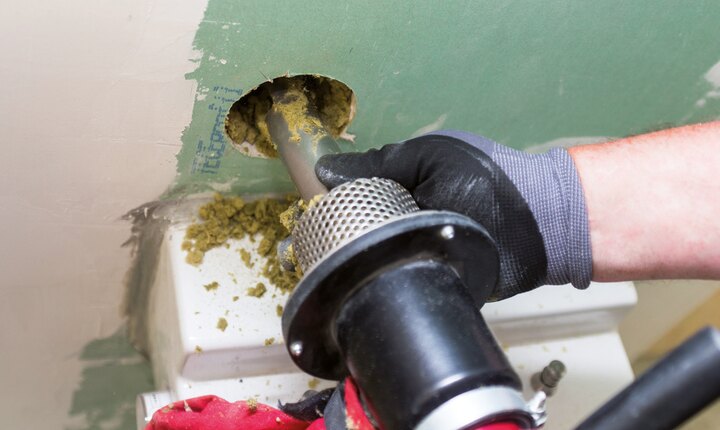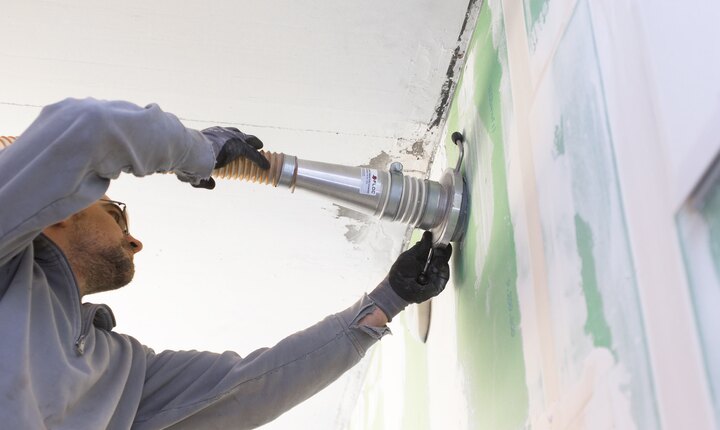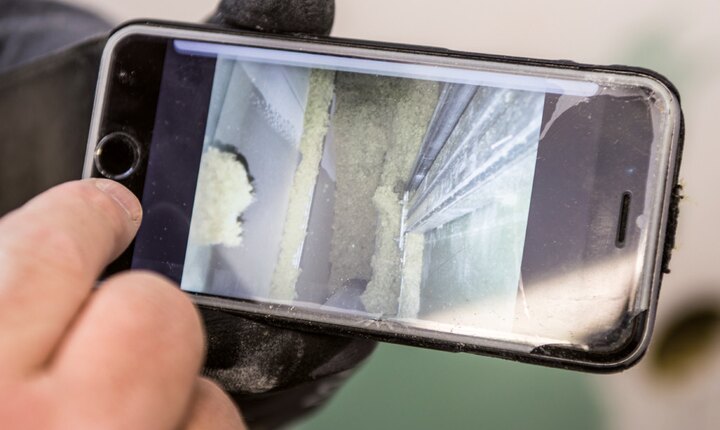
Pre-wall installation with sound insulation, fire protection and thermal insulation in one
With each MEP installation, the fire-resistant partitioning of installation systems across the floor is a time-intensive obligation that must be performed by highly qualified personnel. You can save time and manpower in the implementation by using blown-in insulation for pre-wall installations.
How does blown-in insulation work?
With machine-based blown-in insulation technology, aka cavity wall insulation (or CWI technology), a powerful fan pushes flocks of rock wool into wall cavities. This technology has already been used for roughly 50 years for building insulation, e.g. it can be used to do away with the need for cutting mineral wool when expanding attics. When using this technology, it is important to know the precise volume to be filled. With the help of the desired insulation density you can then also precisely determine the required filling amount.
Pre-wall installation with TECEprofil and TECEsystem
This is precisely how you can e.g. implement room-height TECEprofil and TECEsystem installation walls professionally as installation shafts. Ceiling partitioning systems classified for fire protection are no longer required extras as even if plasterboards fail, the prevention of the transmission of fire and smoke across the floor in accordance with Sec. 14 MBO 2016 is still ensured by the stability of the blown-in insulation technology. The responsibility for fire protection is assumed here by the specialist company.
Tested fire protection and sound insulation
The finished insulation with mineral wool is not only compact but also brilliantly fulfils the requirements for fire protections. Owing to the selection of materials, unlike today's widely spread insulation with polystyrene, there is no additional fire load in the building. Even the requirements of advanced sound insulation in accordance with DIN 4109 and private legal sound insulation for SSTI-III in accordance with VDI 4100 are convincing. The increased sound insulation of pre-wall installations in front of light dry-wall constructions was confirmed in a test conducted by the Stuttgart Fraunhofer Institute. Among other things, the sounds from the sanitary installation to adjoining rooms were tested in accordance with DIN 4109 and VDI 4100.
Thermal insulation for even better potable water
The blown-in insulation technology in pre-wall installations also means it's possible to thermally separate cold and warm areas. This has a positive effect on the potable water hygiene. TECE procures various specialist insulation companies on request for the application of this procedure. Get in touch with us.
Our tip:
in projects with prefabricated sanitary walls, this technology offers the sanitary entrepreneur the ability to delegate partial constructions they find less attractive and simultaneously to create a sanitary installation with an increased quality standard.



